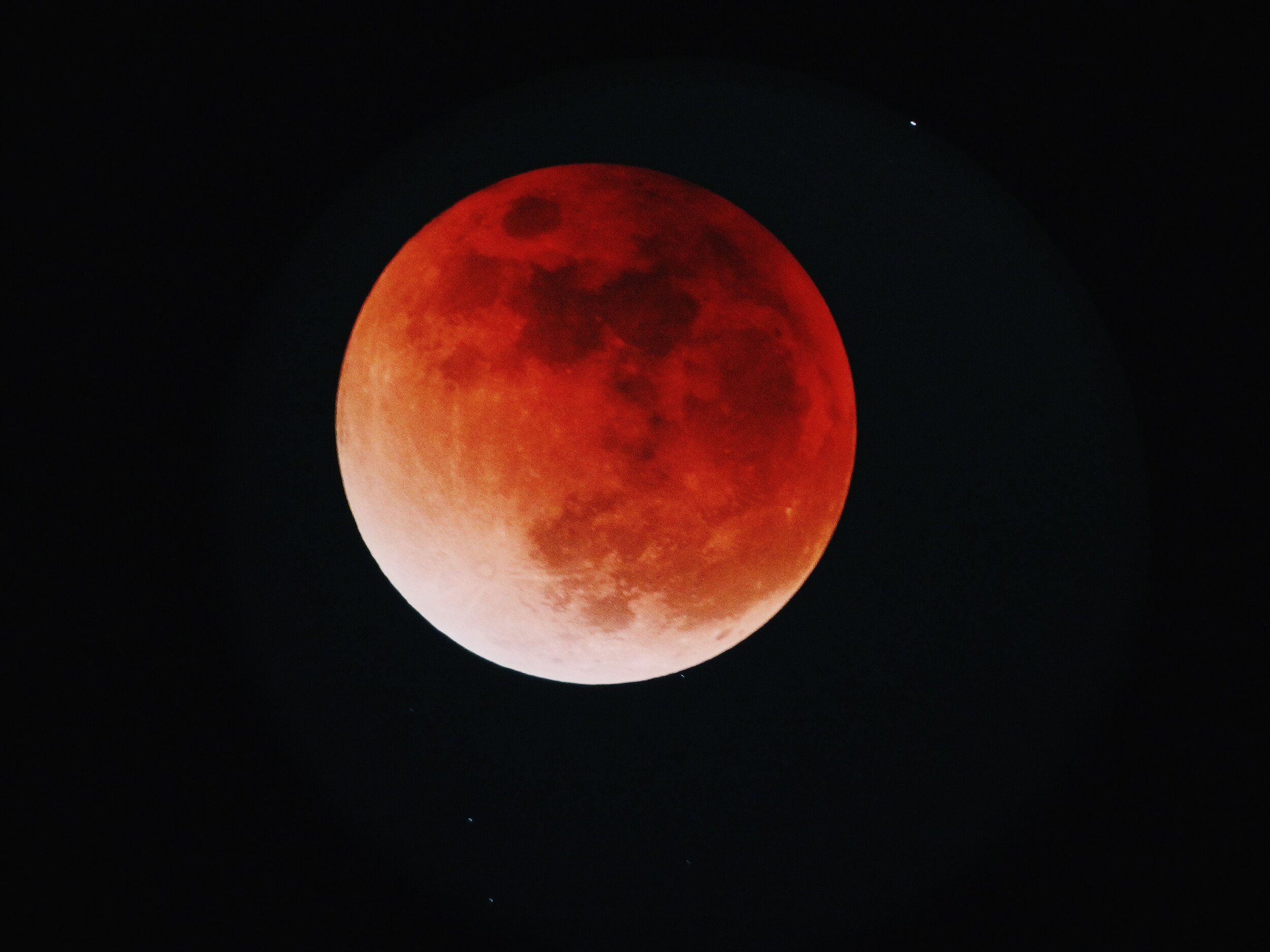OVER THE MOON: TOTAL LUNAR ECLIPSE
Photo by Kevin Buman via Unsplash
Mark your calendars for Wednesday, May 26 – a lunar eclipse is on the way! According to NASA, the Moon will enter Earth’s shadow during the early morning hours, creating a total lunar eclipse – the first in almost two and a half years. Although the eclipse will only be partially visible from North America, with the best views in western North America and Hawaii, we still love our favorite luminous orb showing us its dark side.
LUNA
A lunar eclipse occurs when the full Moon enters the shadow of Earth, obscuring all or part of the sunlight reflected by the Moon. A total lunar eclipse occurs when the Moon and the Sun are on exact opposite sides of Earth, and the Moon passes completely through the umbra – the central dark part of Earth’s shadow.
EARTH’S SHADOWS
The Sun is so massive that the shadow Earth casts is split into two zones. The first is the penumbra that forms a cone that gets larger as it moves away from the Sun. The Moon passes through this zone twice – at the beginning and the end of the eclipse. The second zone is the umbra, the shadow that forms a cone that gets smaller as it moves away from the Sun. This is the dark center of the eclipse shadow.
BLOOD MOON
At the height of a total lunar eclipse, the Moon turns a dark, reddish hue, giving it the nickname “blood moon”. While the Moon is in Earth’s shadow, a small bit of sunlight still reaches the Moon. This sunlight passes through Earth’s atmosphere and most of the blue light is filtered out which results in the Moon appearing red to people on Earth.
Many ancient civilizations interpreted the blood moon with evil intent. The ancient Inca interpreted the deep red color as a jaguar attacking and eating the Moon. The Inca thought that after it attacked the Moon, the jaguar would crash to Earth and eat people. To prevent that, they would drive the predator away by shaking spears at the Moon and making a lot of noise.
The Hupa, a Native American tribe from northern California, believes the Moon had 20 wives and a lot of pets. Most of those pets were mountain lions and snakes, and when the Moon didn’t bring them enough food, they attacked and made him bleed. The eclipse would then end when the Moon’s wives would come in and protect him, collecting his blood and restoring him to health.
MOON WATCH
Eastern and Central North America will be competing with sunrise that morning. However, for those out West, these are your Moon watch times, according to the Farmer’s Almanac:
The Moon will enter the penumbra at 1:46am PDT and umbra at 2:45am PDT. It will leave the umbra at 5:53am PDT and penumbra at 6:51am PDT.
Unlike a solar eclipse, there are no issues viewing a lunar eclipse with the naked eye. Set your alarm, make a fresh pot of coffee and kick back to watch the glorious transformation of our closet celestial neighbor.
Photo by Melanie Dretvic via Unsplash



